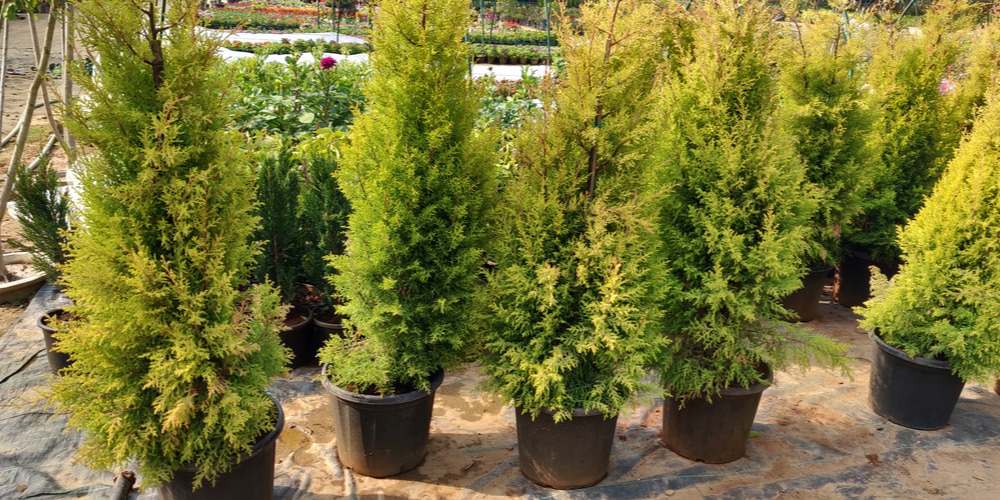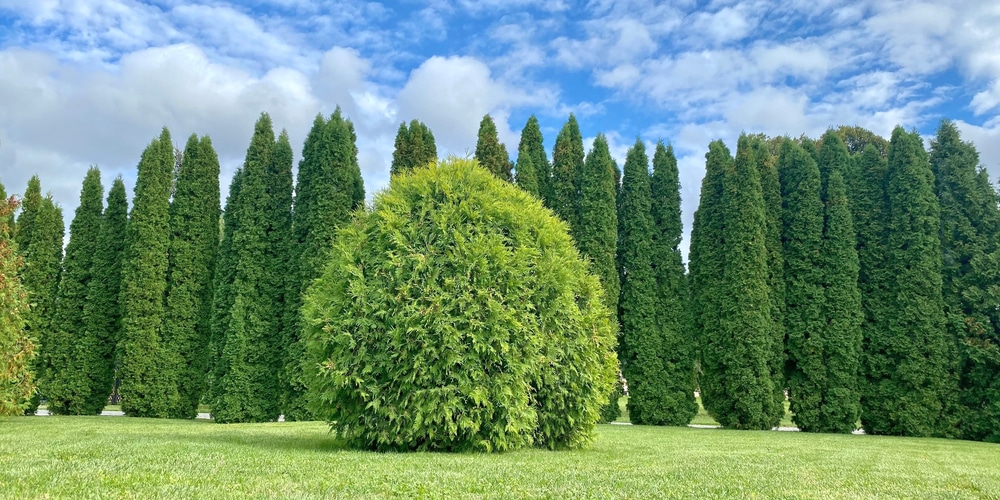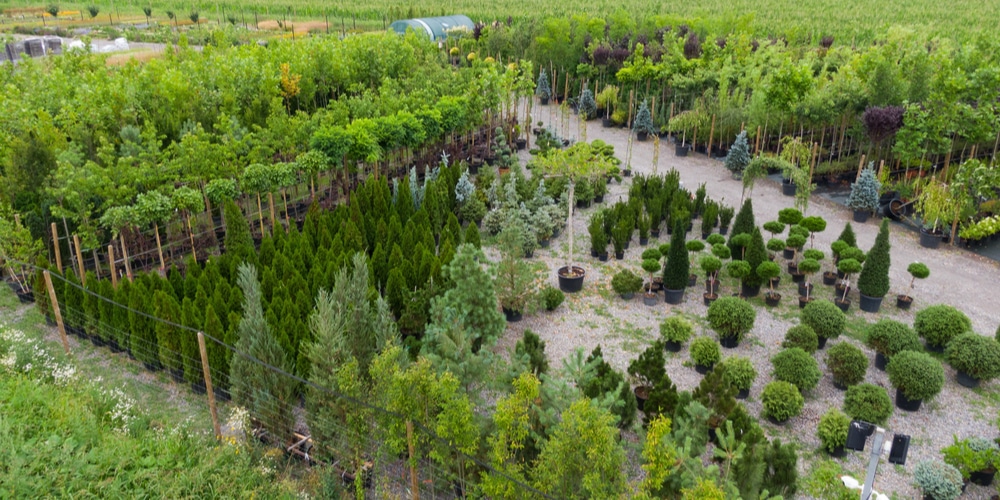Prized for their lush green foliage and columnar shape, Green Giant Arborvitae (Thuja occidentalis ‘Green Giant’) makes a dramatic addition to the landscape. This North American evergreen grows rapidly, reaching heights of 40 to 60 feet. The tree is also popular among homeowners and commercial property owners for its dense foliage, providing privacy and shelter from the wind. The deep green color of its needles makes it an attractive focal point in any landscape. Let’s look at how far to plant green giant arborvitae from a fence.
Quick answer
Because of its rapid growth rate, Green Giant Arborvitae should be planted at the right spot. Ideally, it should be 5 feet away from the fence or property line.
This will give the tree enough room to grow without encroaching on your home or yard space. If planted too close to a fence or property line, the tree can become root-bound and stunt its growth.
Best Practices for Planting Green Giant Arborvitae

With its strikingly tall and narrow form, Green Giant Arborvitae is a perfect specimen tree for the landscape. There’s no contest that it’s a showstopper, but it’s important to plant it in the right spot. Here are some best practices for planting this North American evergreen:
How Far to Plant Green Giant Arborvitae from a Fence
Spacing is an important consideration when planting Green Giant Arborvitae. This evergreen can grow up to three feet per year, so it is vital to allow enough space for it to reach its full potential. When planting, consider the mature height of the tree and plant accordingly.
For example, if you want a hedge that is eight feet tall, you would need to plant the trees four feet apart and at least 5 feet away from the fence. This ensures that the tree will have plenty of space to grow and not take over the entire yard.
Spacing requirements may also vary depending on what you want to achieve with the said shrub. Is it for utility or privacy? For privacy purposes, spacing each hedgerow at least ten feet apart is ideal. For utility purposes, like a windbreak, six to eight feet is more appropriate. Additionally, remember to take into account the mature width of the tree. Thuja occidentalis ‘Green Giant’ can grow up to six feet wide, so make sure there’s enough room for it before planting.
Pruning Green Giant Arborvitae for Optimal Growth
For many gardeners, the decision to prune their arborvitae is a difficult one. There’s no denying that pruning can help encourage new growth and promote a healthy, well-shaped tree. On the other hand, improper pruning can cause irreversible damage. Although the green giant doesn’t necessarily require pruning, it can be done to maintain its shape, especially for its aesthetic appeal.
If you decide to prune your arborvitae, do so in late winter or early spring, before new growth begins. Use sharp shears to cut the branches back to their point of origin and ensure that all cuts are made at a 45-degree angle.
Your first priority should be to cut diseased, damaged, or dead branches when pruning. These branches can be easily identified by their discolored needles and lack of foliage. After removing the dead wood, you can then focus on shaping the tree. If you’re looking to keep it tall and narrow, remove any lateral branches that are growing outwards.
If you’re looking to maintain its natural shape, remove only the branches that are growing in the wrong direction. Pruning should be done sparingly, as over-pruning can cause stress to the tree and lead to dieback.
Planting Green Giant Arborvitae
When you’re ready to plant your arborvitae, it’s important to select a location that will provide it with the right amount of sunlight. This evergreen prefers and thrives in full sun but can also tolerate partial shade.
The soil should be well-draining and moist, but not wet. Amend the soil with organic matter to help improve drainage and fertility. Dig a hole that is twice as wide as the root ball but no deeper than the root ball itself.
Carefully remove the tree from the container and place it in the hole. Backfill with soil, making sure to pack it down gently. Water thoroughly and continue to water regularly for the first few weeks after planting.
The Best Time to Plant and Transplant a Green Giant Arborvitae
Now that we know a little about how far to plant green giant Arborvitae from a fence, let’s take a look at WHEN to plant one.
During the fall, the ground is still warm and the air is cooler. This is the most ideal time to plant trees and shrubs. At this time, the soil’s moisture levels are also higher, helping newly planted trees get off to a good start.
For transplanting a Green Giant Arborvitae, the best time is in late spring or early summer. This is when the tree is most actively growing and will be less likely to experience transplant shock.
Remember to water newly planted trees regularly for the first few weeks until they become established.
When in Doubt, Ask a Pro
Working on your landscape and using trees and shrubs to achieve the look you want can sometimes be overwhelming. While there’s nothing more fulfilling than seeing your hard work pay off, it’s always a good idea to consult with a professional. If you’re in doubt, and still have questions about proper spacing between plants and from your fence, a good landscaping professional will be able to offer you sound advice.
Final Thoughts
Loved for its pyramidal shape and deep green foliage, the Green Giant Arborvitae makes a lovely addition to any home or garden space. When planted and spaced correctly, it can provide privacy and screening for years and can make a great focal point for your garden.
Related Article: Does Arborvitae Grow in Texas?

